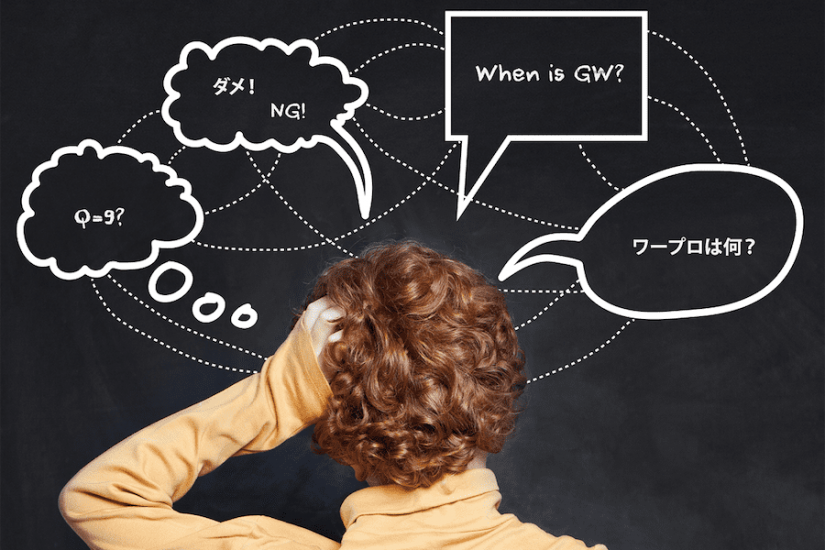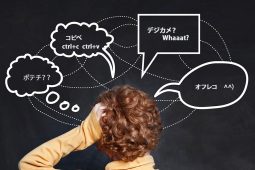Welcome to a new series, where I’ll be walking you through some of the stranger twists and turns of the Japanese language. As languages go, it’s probably the most reasonable one I speak (certainly makes more sense than English), but it’s different enough from most other languages that there are still lots of things to trip over for a potential student. This series is one part reference guide, and one part trivia, in case you just like languages and learning every little thing you can about them.
For the first article, as you’ve probably guessed, we’re looking at contractions and abbreviations. Japanese is a language that has huge amounts of both, which I personally attribute in part to kanji: A natural system of, for example, cramming an entire proverb into four characters. When you’re used to that kind of space-saving, longer compound words start to look untidy, especially loanwords. Besides that, Japanese slang has a far stronger trend of abbreviation than in, say, English.
Examples are everywhere, so instead of listing too many of those, I’ll leave a couple as examples, and mostly go into the methods by which it’s done.
The use of kanji and their condensed meaning leads Japanese towards a hybrid of taking the first letter of each word, and mashing parts of it together to make a new word (examples of these in English might be GIF and Radar, respectively). If it’s a huge block of kanji, you might see the first kanji of each word taken and fused together into a new word, which then becomes the main way it’s used. For example, 東大 (Tōdai) instead of 東京大学 (Tōkyō Daigaku), for Tokyo University. Many of these are so common that it took me an embarrassing number of years living here to realise it was an abbreviation at all.
Similarly, without kanji, you might take the first two letters of each word. ワードプロセッサー (wādo purosessā) to ワープロ (wāpuro), for instance. Single words can have shorter abbreviations taking entirely from the start: Animation to anime might be a familiar one for many. On the other hand, some compound words get that treatment as well, like スマートフォン (sumāto fon) to スマホ (sumaho).
At this point you’re probably waiting to see what decides which way it’s said. The answer is that people decide for themselves over a couple years for anything modern, which is to say, there aren’t really any rules, sorry.
Abbreviated names for famous people are a bit of a wild card. You might get the ’two characters from each word’ school, or something more nickname-ish, but at least between the two you should be covered. Train and bus lines show this often as well, and more confusingly, change the reading of some kanji involved in the process. Taking the first second kanji of Osaka, and the first of Kobe, you get Hanshin, which is also the collective term for that region. Notice how neither is pronounced that way in the original. It gets even stranger for things like the Seibu line, which is a callback to when the region was called Musashi (something that officially nobody has done in about 150 years at the time of writing). It’s a really, really good thing you only need to know this for etymological purposes, honestly.
Classical English style acronyms — the first letter of each word, in Latin characters — do exist, but it’s relatively rare. Or rather, there aren’t many cases of it, but when one happens, it sticks and you’ll see it all over the place. These are pretty simple: It’s usually (but not always) two words to start with, you take the first letter of each, and you’re done. CM for Commercial Message (ads), PV for Promotional Video, GW for Golden Week (a holiday period in spring), and so on. Putting aside ones with 3 + words, some less usual examples are NG for No Good (used to indicate when something shouldn’t be done, or for a retake in filming, as in ’[something] is NG’), and SP for Special, which is… actually just one not particularly long word. I don’t know why that one happened.
Going on from there, some words and even non-words in some cases will get condensed down to a single Latin character. These are particularly prevalent in advertisement, and then probably in printed advertisement more than the spoken kind (so, posters over television ads, for example), although I might be imagining that. Some examples are Q for 9 (since it’s pronounced ’kyuu’ in Japanese), J for Japan (used a lot in official capacity unlike the rest), and the letter W to mean ’double’, another decision that confuses me to this day. ’E’ is another confusing one, as it can be used to mean electronic (with connotations of some online component being involved), or it can be used because it sounds the same as ’ii’, meaning ’good’. The trick is that either way it’s being used in advertisement, so the less you care about what impression they’re trying to make, the better off you are.
For our last entry, this brings us to an odd quirk of associations that isn’t strictly abbreviation, but occupies a similar space. In the same way that W is used to mean double, the letter X is used in the same way as the multiplication symbol a lot in advertisements and titles of some modern media… to indicate either addition (the two things on either side of the X are being combined), or opposition (this one’s more for media; the things on either side of the X are going against each other). Your guess is as good as mine for this one.
As another offshoot of it — this goes back to Q and 9 a bit — every number has a character or three you could associate with it if you want to. For example, 9 could be ’kyuu’ or ’ku’. 4 could be ’yon’ or ’yo’ or ’shi’. 2 could be ’ni’ or ’fu’ (for ’futatsu’), and so on. This leads to trying to tie strings of numbers to phrases or vice versa, most commonly seen when ads try to make their company’s phone number say something that you would never think of unless they told you (and probably forget right after, because mnemonics have never worked for me).
That about wraps it up for abbreviations; keep an eye on this series for another dip into the odd twists and turns of language next time.








